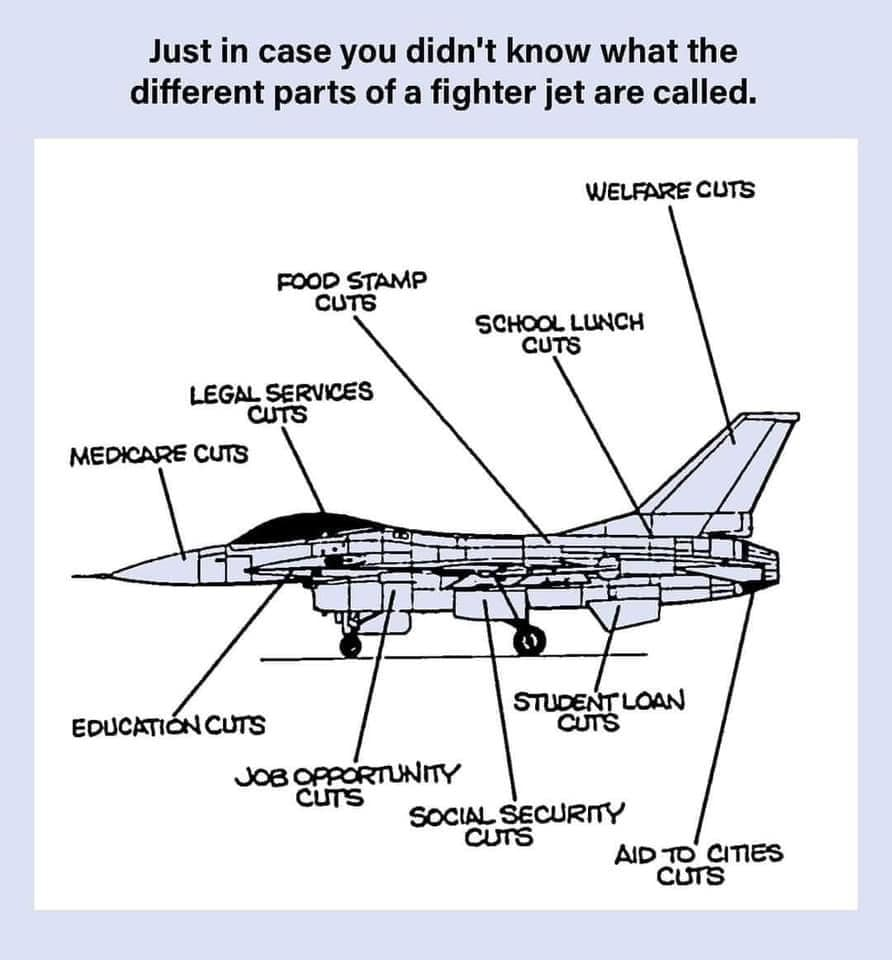this post was submitted on 16 Nov 2023
783 points (92.1% liked)
Political Memes
6107 readers
2079 users here now
Welcome to politcal memes!
These are our rules:
Be civil
Jokes are okay, but don’t intentionally harass or disturb any member of our community. Sexism, racism and bigotry are not allowed. Good faith argumentation only. No posts discouraging people to vote or shaming people for voting.
No misinformation
Don’t post any intentional misinformation. When asked by mods, provide sources for any claims you make.
Posts should be memes
Random pictures do not qualify as memes. Relevance to politics is required.
No bots, spam or self-promotion
Follow instance rules, ask for your bot to be allowed on this community.
founded 2 years ago
MODERATORS
you are viewing a single comment's thread
view the rest of the comments
view the rest of the comments

One of the biggest budget issues with the F35 program is that maintenance and repairs must go through private industry. Corporations just continuing to milk profit at every level. https://www.defensenews.com/air/2023/09/22/gao-blasts-contractor-led-f-35-maintenance-as-costly-slow/
There was the semi-recent report following the plane disappearance in the Carolinas that pointed to the battle readiness of the F35 program being lower than is acceptable (don’t remember the percentage thrown out there), and a lot of that is due to the corporate side of the deal. Parts are not readily available when needed, repairs are going slower than we are used to, and this is on top of using newer technologies in an effort to PREDICT future conflicts.
I hope we have learned our lessons from the F22 and F35 programs. New tank designs for the successor to the M1A2 Abrams are popping up. We cannot allow future programs to continue to favor corporate profits to these levels.
Thank you for the link and info!
Also, a big contributor to the expense of the F-22, both as a program and on a per unit basis, is that the US didn't make the aircraft available for purchase by foreign allies. So there's only, iirc, 200-some-odd F-22s in existence.
That means far fewer produced, and by extension, more of the one-time costs are baked into each fighter, and upgrades, maintenance, and "future proofing" expenses are spent in support of a smaller overall fleet, which lowers the ceiling on profitability and limits the benefits of scaling.
All that, and it's still the best air-to-air platform in existence, and the US is the only country that has em.
Thanks for the explaination!